
Conservation seen like never before
BOOK
[caption id="BeyondtheBookshelf_img1" align="alignright" width="93"]

Living Buildings: Architectural Conservation: Philosophy, Principles and Practice, by Donald Insall, Images Publishing, Mulgrave, Victoria, 272 pages, hardcover, $75.
“A building is not something created at one stroke—a static and crystalline object, incapable of change. Rather it is the living outcome of an interaction between people and their place—between human beings, each with their own individual dreams and desires, and their daily needs and surroundings.
“Ever since it was created, each building has had its own special ‘life’: surroundings and weather have taken their toll, and the structure has responded to its physical setting and subsoil.”
For half a century now, Donald Insall has led the field of architectural conservancy. Insall and his team of associates have restored, conserved and rebuilt literally hundreds of stately homes, churches, castles, monuments, public buildings and entire city precincts. Most famously, Insall directed the restoration of Windsor Castle following its disastrous fire in 1992.
This oversize, lavish book tells the 50-year story of Insall’s work, on the House of Lords, Winchester High Street, Cambridge’s Trinity College and Wren Library, Chevening House (the Prince of Wales’ first country home), and many, many others. More than 600 photos and colorful, easy-to-read schematic drawings illustrate the tale.
In the process, Insall illustrates clearly the principles and craftsmanship that guide the process of architectural conservancy in the hierarchy of circumstances that are building maintenance, conservation, restoration and rebuilding.
Insall approaches his writing the same way he approaches buildings in need of help—painstakingly clear style, well-organized, thorough and creatively thoughtful. For anyone with an interest in British history and an ounce of curiosity about how it physically exists and evolves, this is a fascinating, informative book. Living Buildings is a beautiful volume that would grace any drawing room, but it is no coffee table book. This is an indispensable source book in the field of preservation and renewal. I can’t remember when I’ve learned as much from a book. It is a book not just to be read, but to be explored.
—Dana Huntley
[caption id="BeyondtheBookshelf_img2" align="aligncenter" width="248"]
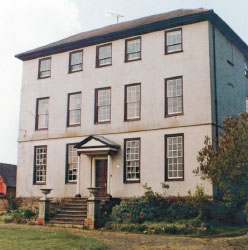
Donald Insall visits with Sandra Lawrence
DONALD INSALL’S FAMILY motto is “Bring Forth the Best.” It is hard to think of a maxim more suited to a life devoted to finding what makes buildings tick, and translating that essence to something not just tangible, but relevant to the modern world. In the 50-odd years that his company has existed, Insall has seen attitudes and approaches to conservation veer back and forth between two extremes.
As he writes in Living Buildings, we all have a “deep human instinct to keep alive what is worthwhile.” Each of us wants to keep things that are familiar and comforting around us—and buildings are part of our experience as individuals. “But,” says Insall, “we have a second instinct. We need to try to improve all the time.” And in the case of architecture, that need is often manifested in the desire to pull down the past and erect something new; something upon which we can stamp our own image and ideas.
At no time was this almost schizophrenic attitude to buildings more apparent than the 1950s, when Britain was faced with the prospect of dealing with swathes of wartime destruction.
Sometimes entire cities; sometimes a few buildings, but rarely had nothing at all been damaged. Not least the people themselves. Britain wanted to move on.
“Homes fit for heroes,” ran the line. Everyone wanted to “build a better Britain.” Most just wanted to sweep away the past and start their lives afresh.
For Donald Insall, himself fresh from the Army after his architectural training had been interrupted by the war, there already was a dichotomy. Of course Britain needed reconstruction—but that didn’t necessarily mean throwing the historical baby out with the bathwater.
“We were bucking the trend,” he admits. “People often expected me to be much older.” Described as “puzzling and unrepentant reactionaries,” Insall and his associates were regarded with slight suspicion. How could someone so young be interested in saving scruffy old buildings?
But for this “young fogey,” it wasn’t a case of merely “saving” buildings. His training, first at Bristol, then the Royal Academy and finally with the Society for the Protection of Ancient Buildings, was under two inspirational tutors who taught century him the value of “the composite mind” (“teamwork” in modern parlance) and his approach to cities and buildings, which can be seen as almost botanical.
[caption id="BeyondtheBookshelf_img3" align="aligncenter" width="603"]
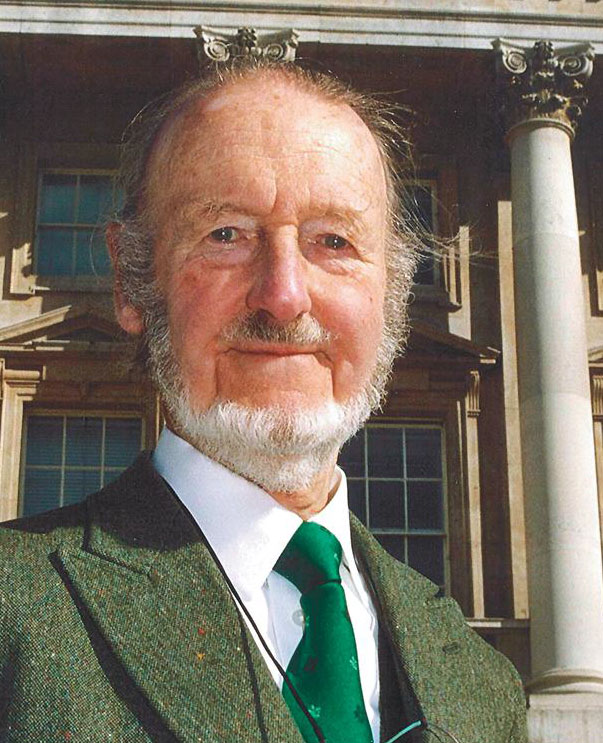
ROBIN STUMMER
“Every building is alive,” he says. “We have to see it as a whole to understand it.” Materials, structure and purpose are constantly changing, he explains—as are the human requirements of the building. Even things around it will change—a cottage set in acres of bucolic charm in the 18th century might, in the 21st, be in the middle of a busy town, under a Heathrow flight path or 10 yards from a motorway.
Whatever their latest commission, whether a humble private dwelling or a stately home, Insall and his team (“I couldn’t possibly have achieved what we have, on my own,” he insists) spend most of their time getting to understand a building. “We need to analyze each case rather like a doctor does,” he explains, “to marry it with the people using it and comprehend the relationship between the two.
“We ask ourselves what is special about that particular building—it may not even be part of the original construction.” He cites Staircase House in Stockport, which was damaged by fire. The most arresting thing about it is a particularly fine staircase—even though it wasn’t part of the original house. “We honor the best parts,” he says. “It’s all about what we value about a place.”
He is keen not to merely “pick a date” and “return” a house to that period, removing anything that’s “inappropriate”—an attitude that used to be fashionable. A house grows, according to Insall, and everything that happens to it becomes part of its history.
“The group I was part of was trying to press for acceptance of conservation, respecting the various phases of growth through the years,” he says, “to preserve the place’s spirit and voice.” In other words, to let a house grow old gracefully, rather than bolster it up with cosmetic finery. In the instance of Staircase House, some of the charred timber was eventually retained—the fire being as much part of the house’s story as the beams, rafters—or even that staircase.
With Windsor Castle, arguably Insall’s most famous commission, they followed exactly the same philosophy. After the initial shock (“Horror,” he admits, of his first sight of the fire-damaged St. George’s Hall), they applied their tried and tested principles to the royal treasure—in the process finding out some fascinating things about the place, not least a much older roof concealed in the Great Kitchen.
And that’s where the real decisions begin. Just which bits do you save? Which aspect of history is most important to us—as users and temporary custodians of buildings? Insall acknowledges that it’s not an easy choice. As he freely admits, “you get lockjaw if you try to save absolutely everything.”
—Sandra Lawrence
[caption id="BeyondtheBookshelf_img4" align="aligncenter" width="292"]
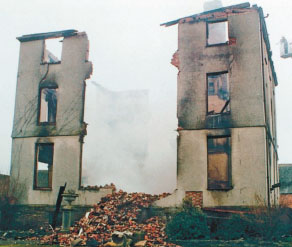
NICHOLAS KEEBLE
[caption id="BeyondtheBookshelf_img5" align="aligncenter" width="1024"]
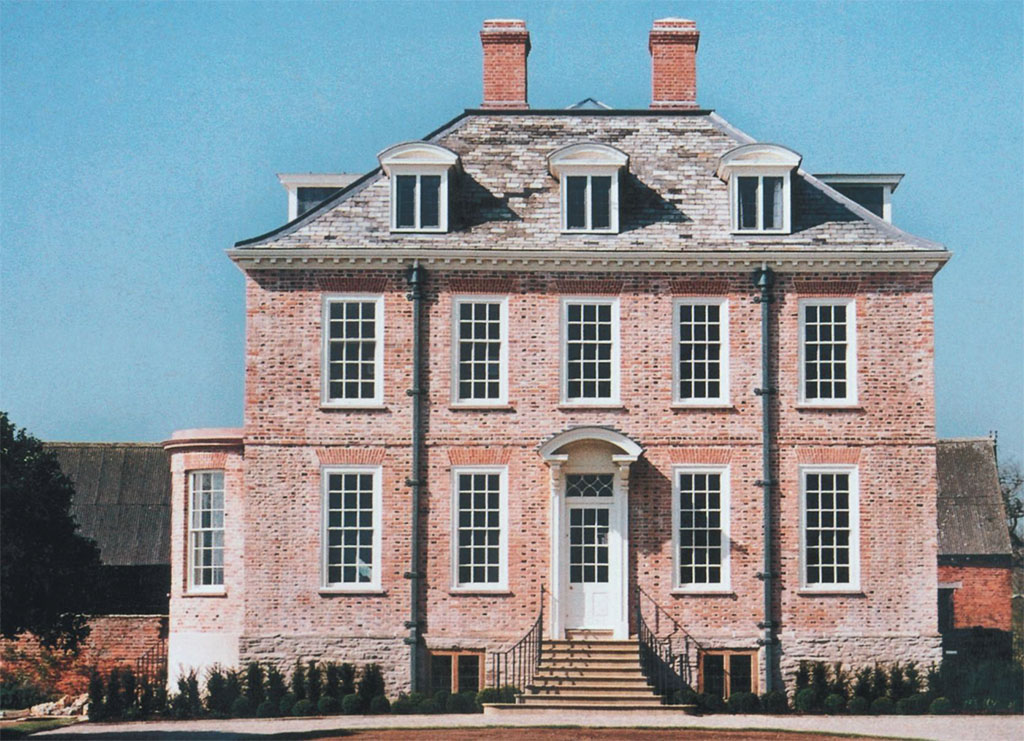
DONALD INSALL ASSOCIATES
Lush filming of great 18th-century comedy
DVD
[caption id="BeyondtheBookshelf_img6" align="alignright" width="109"]
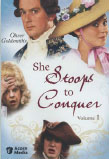
She Stoops to Conquer, 2-vol. boxed set, Acorn Media, Silver Spring, Md., five episodes, app. 145 minutes, $39.95.
THINK OF She Stoops to Conquer as the Saturday Night Live, or even the Monty Python of its day. Few 18th-century dramas remain popular today; this great Georgian comedy of manners by Oliver Goldsmith and Richard Brinsley Sheridan’s The Rivals and School for Scandal are about it. What survives to represent the theater of a society is that which poked fun at it.
Indeed, one of the great attributes of Goldsmith’s play is that it weaves together the comic elements of farce, satire and romantic comedy. Social hypocrisy and mistaken identities, rustic simplicity and urban vanity: Polite Georgian society is taken apart with wit as Goldsmith holds the mirror up to the pretenses of his day.
This visually beautiful five-episode production of Goldsmith’s 1771 stage comedy was filmed entirely at 17th-century Nivvington Hall, Norfolk. The production escapes the limitations of the stage, but retains the original text rather than adapting it. The result is fascinating, as a “real live” setting often helps illuminate the 18th-century language and customs.
Of the plot of She Stoops to Conquer, there is no point in even trying to précis. The seed mix of deceptions and misunderstandings that brings together eager lovers, ludicrous eccentrics and assorted rustics at Liberty Hall is bound to blossom into humor. That the play is as funny now as it was in Goldsmith’s day is evidence of the universality of his themes and the timelessness of human nature.
This boxed-set edition of the great Goldsmith drama is a lovely bit of performance art that illuminates the society of Georgian England and delights the funny bone. It definitely deserves a home in any collection of “literary” DVDs.
A Dickensian comic mystery delight
DVD
[caption id="BeyondtheBookshelf_img7" align="alignright" width="93"]

The Beiderbecke Affair, 2-vol. boxed set, Acorn Media, Silver Spring, Md., six episodes, 300 minutes, $39.99.
WISECRACKING schoolteachers turn amateur detectives when Trevor Chaplin buys a set of jazz records that goes missing. He and his girlfriend, Jill Swinburne, decide to track them down. Soon the pair are drawn into black market goods in a church basement, secret meetings in a parking lot and corruption at the highest levels.
Set in industrial Yorkshire, this quirky British mystery features witty banter, a bit of whimsy and a cast of colorful characters: Big Al and Little Norm, an overzealous police officer, a with-it vicar, an elderly snoop with a dog and a town planner with a drawer full of incriminating files.
James Bolam and Barbara Flynn star as the wry, wisecracking teachers pursuing as much a little excitement in their pedestrian lives as Trevor’s jazz records. At one level, they are reminiscent of Myrna Loy and William Powell or Tracy and Hepburn. Urban Yorkshire, though, is a gritty place, full of good-hearted working class folk who well may be a little rough around the edges. And the cityscape is not picturesque.
British mystery fans will be delighted to see Dudley Sutton from Lovejoy largely his curmudgeonly self as a fellow teacher.
The Beiderbecke Affair is a light, literate mystery. There is an edge to the setting of social realism, but the series just cannot take itself too seriously. In the end, the villains have all become caricatures and everyone else has become charming despite their foibles. Wink, wink. Nudge, nudge.
This fun series will not go down in the annals of great visual literature. It doesn’t make the attempt, and it doesn’t need to. As a few evenings’ entertainment, though, The Beiderbecke Affair is a great find.
Drama on the West End Stage
THEATER
The Woman in Black
by Stephen Mallatratt from the novel by Susan Hill. Fortune Theatre Russell Street, WC2B 5HH Tube: Covent Garden Telephone: 0870 060 6626
The 39 Steps
By John Buchan, adapted by Patrick Barlow. Criterion Theatre Piccadilly Circus, London, W1 Tube: Piccadilly Circus Telephone: 0844 8471778
The Mousetrap
By Agatha Christie, St. Martin’s Theatre, West St, WC2H 9NH Tube: Leicester Square Telephone: 020 7836 1443
[caption id="BeyondtheBookshelf_img8" align="aligncenter" width="504"]
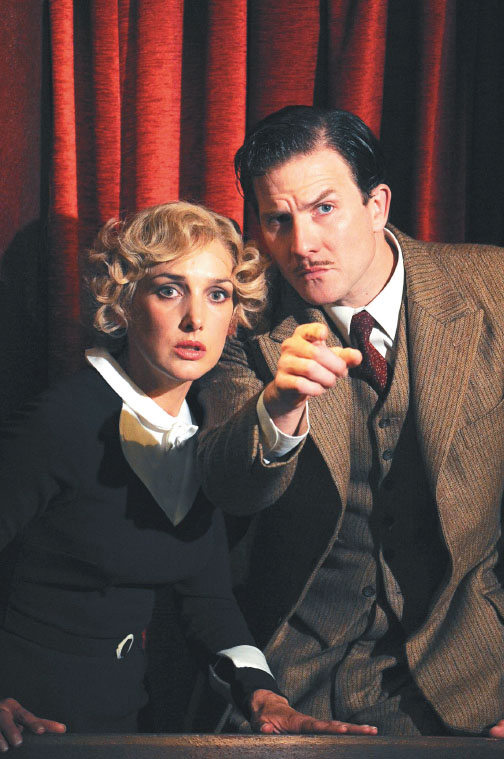
TRISTRAM KENTON
The hot tickets and the longest runs usually belong to the musicals. But here are several classic dramas in London that have been pulling crowds for years and are booking deep into 2009. You can check them out on many theater Web sites, including www.londontheatre.co.uk.
THE WOMAN IN BLACK
Having opened in June 1989, The Woman in Black is set to go into its 21st year in the West End—no small accomplishment for a “straight” play. Arthur Kipps, a junior solicitor, is summoned to attend the funeral of Mrs. Alice Drablow, the sole inhabitant of Eel Marsh House, an isolated manor on the salt marshes beyond Nine Lives Causeway. When he sees a strange woman dressed in black at the funeral, a gripping sense of unease takes hold of him, and he begins to seek out the tragic secrets that lie behind the shuttered windows of Eel Marsh. The play unfolds as, years later, Kipps recounts his experiences to an actor and they seek together to exorcise the ghosts he discovered on Eel Marsh all those years ago.
THE 39 STEPS
The 39 Steps is justly best known as Hitchcock’s 1935 classic move thriller. This version is performed by four actors playing a minimum of 150 roles and contains all the legendary scenes from the movie: the chase on the Flying Scotsman, the escape on the Forth Bridge, the first bi-plane crash ever staged in the theater and a sensational finale in the London Palladium. Whether you have seen the Hitchcock film or not, this play is staged for laughs, not terror.
THE MOUSETRAP
The premise is simple: A group of people snowed in together at a guesthouse deep in the countryside discover there is a murderer in their midst. Obviously, the question is which one of them is the guilty party. Never published as a script or novel, The Mousetrap has kept pulling audiences for more than half a century. Originally opened in November 1952 at Ambassadors, the production transferred to the St. Martin’s in 1974 and has been going strong ever since. Little wonder the play has been termed the quintessential English murder mystery.
The Hallé Orchestra
MUSIC
The Hallé Orchestra
Performance schedules and information on the Hallé as well as the Hallé Choir and ensembles can be found at www.halle.co.uk
If asked which professional orchestra is Britain’s oldest, many people—Britons as well as Americans—would guess a London orchestra. But they’d be wrong.
Britain’s oldest orchestra, and arguably its best, is the Hallé Orchestra. Founded in Manchester in 1858, the orchestra is now embarking on a new golden age under its music director, Sir Mark Elder.
The Hallé Orchestra got its start in the revolutionary Europe of 1848, when the German-born pianist Charles Hallé left Paris, where he had belonged to the musical circle that included Liszt, Chopin and Berlioz. In England he began conducting 40 musicians in a series of Gentleman’s Concerts in Manchester. By 1858 he had expanded the 40 to 60 to found an orchestra. He also founded the Hallé Choir. The orchestra, sometimes affectionately called Mr. Hallé’s Band, gave 20 concerts a season. Hallé conducted all of them, and played a piano concerto at most. He was always committed to providing cheap seats and to playing works by such newcomers as Liszt, Brahms, Wagner and Tchaikovsky.
In 1888 Hallé, who had been born Karl Halle in Hagen, Germany and adopted the French form of his name in Paris, became an English knight. As Sir Charles Hallé he announced his hope that his orchestra would survive him and that it would get its own hall with an associated music college.
His first wish came true. The Hallé’s 150th birthday was celebrated January 30, 2008, with a concert of works chosen to mark significant moments of its history. Berlioz’s overture Le Corsaire recalled Hallé’s friendship with Berlioz. Rossini’s Largo al factotum evoked Hallé’s commitment to inviting the best artists to Manchester, while Weber’s Konzertstück commemorated Hallé’s performance at his orchestra’s first concert. Elgar was represented by In the South, first performed in 1904 with Elgar himself conducting the Hallé. Yet another Hallé first was commemorated by Thomas Adès’s These Premises Are Alarmed, created for the Hallé to perform at the opening of the Bridgewater Hall in 1996.
Indeed, the Hallé seems set to exceed its past glories. Historically it played in Manchester’s famed Free Trade Hall, but Sir Charles always hoped his orchestra would get its own hall. That wish came true—or almost true—in 1996, when the Bridgewater Hall opened. Its location on Lower Mosley Street near the railway line running into Oxford Road station seems less than ideal for a concert hall, but its designers used earthquake-proofing techniques to insulate it from the heavy rumbles outside. The elegant woodlined hall quickly became renowned for its excellent acoustics. The Manchester Camarata and the BBC Northern Orchestra share the Bridgewater, so it is not entirely the Hallé’s own building, but it is certainly its home.
Brilliant successes stud the Hallé’s history, but it has also suffered hard times. The Free Trade Hall was bombed in the Second World War. Already, the 1930s depression had sapped financial support, and the orchestra survived only by sharing players with the BBC Northern Orchestra. All but Barbirolli took over in 1942, so he had to rebuild the Hallé. He and Manchester came to identify warmly with each other. But after his death in 1970 the orchestra fared less well. It seemed close to extinction until Elder, appointed music director in 2000, reignited it.
Today, the Hallé has a youth orchestra and a youth choir, and its own CD label. It is regularly lauded, most recently by The Times, as Britain’s best orchestra for its polished and refined playing as well as the impassioned intensity that fills the 2341-seat Bridgewater Hall with sound. Other honors include the Ensemble Award presented to the orchestra by the Royal Philharmonic in 2006, and the knighthood conferred on Elder in 2008. Like Sir Charles Hallé, he energetically espouses new composers. He also specializes in performing the work of late 19th- and early 20th-century composers including Mahler, Sibelius and Shostakovich. And, as ever, the Hallé is renowned for British music, especially Elgar and Vaughan Williams. For music lovers visiting Britain, the Hallé is a must-hear visit!
—Claire Hopley
[caption id="BeyondtheBookshelf_img9" align="aligncenter" width="1024"]
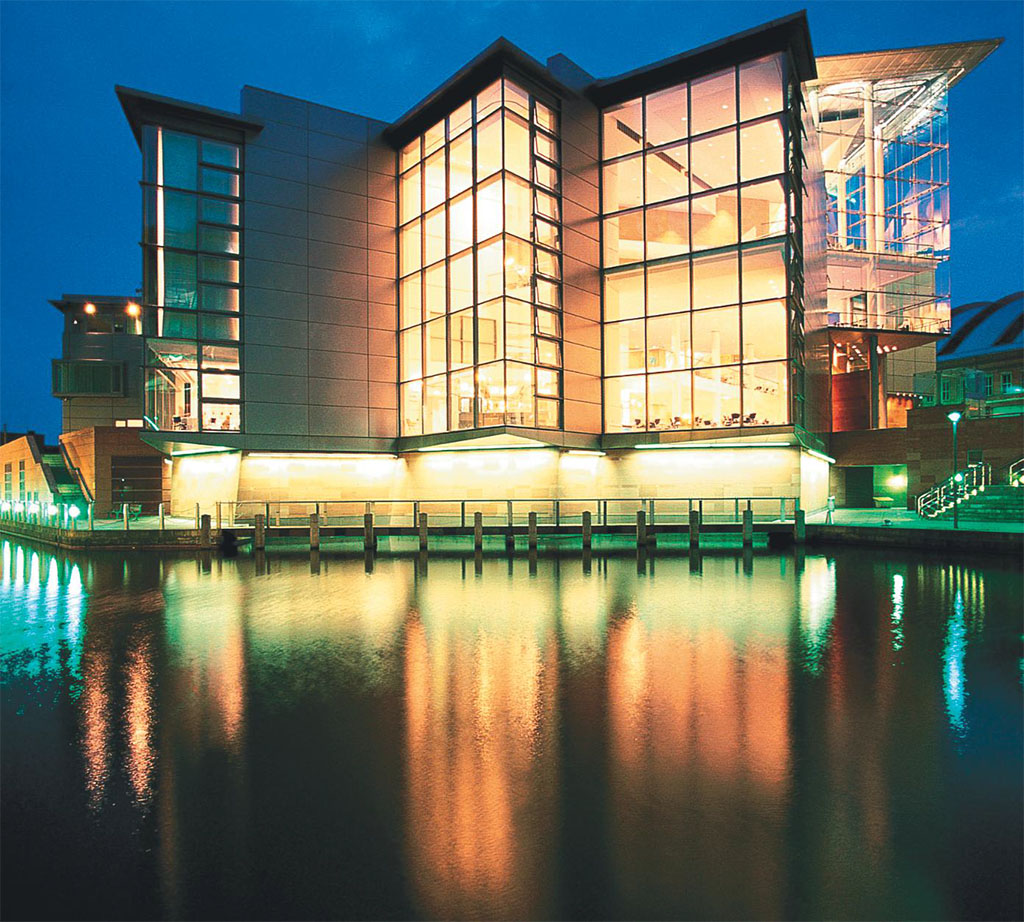
BRIDGEWATER HALL: JAN CHLEBIK
[caption id="BeyondtheBookshelf_img10" align="aligncenter" width="912"]
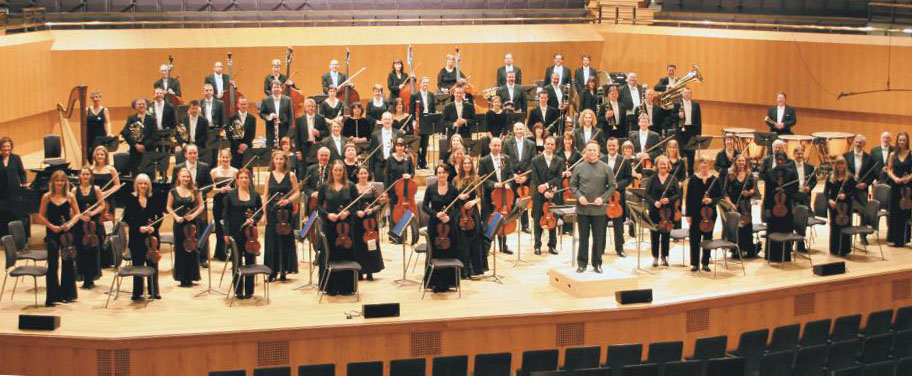
HALLE CONCERT SOCIETY





Comments